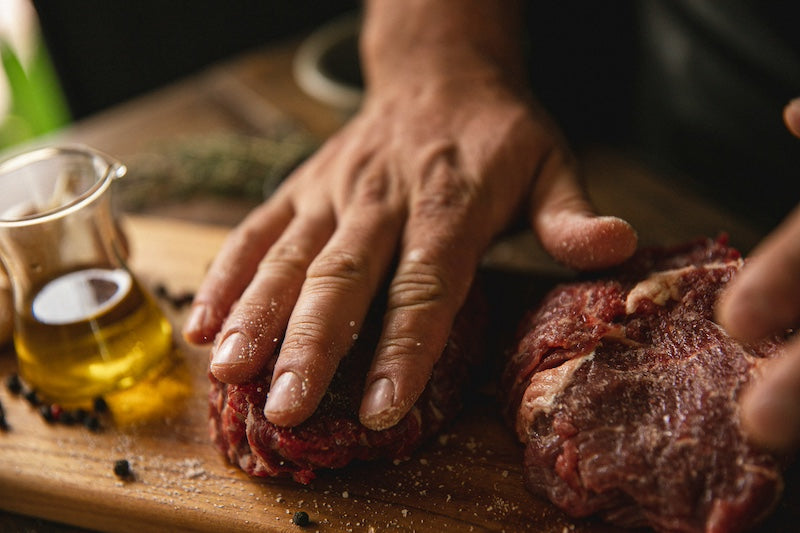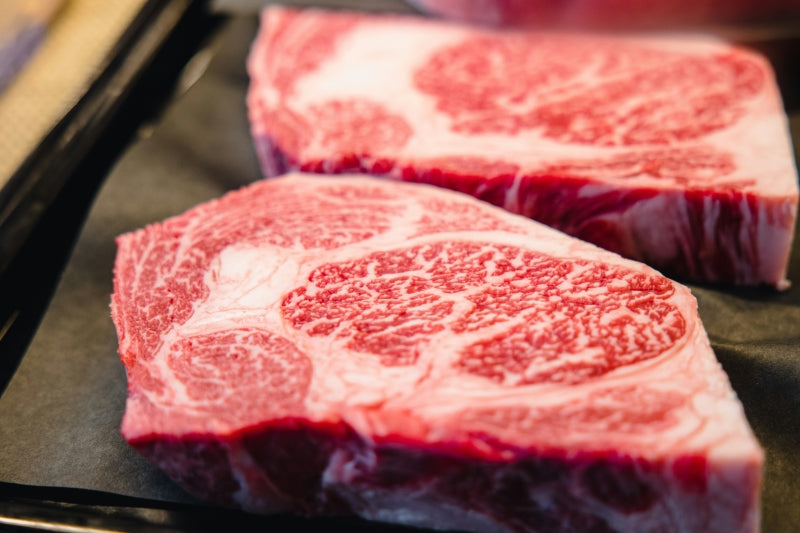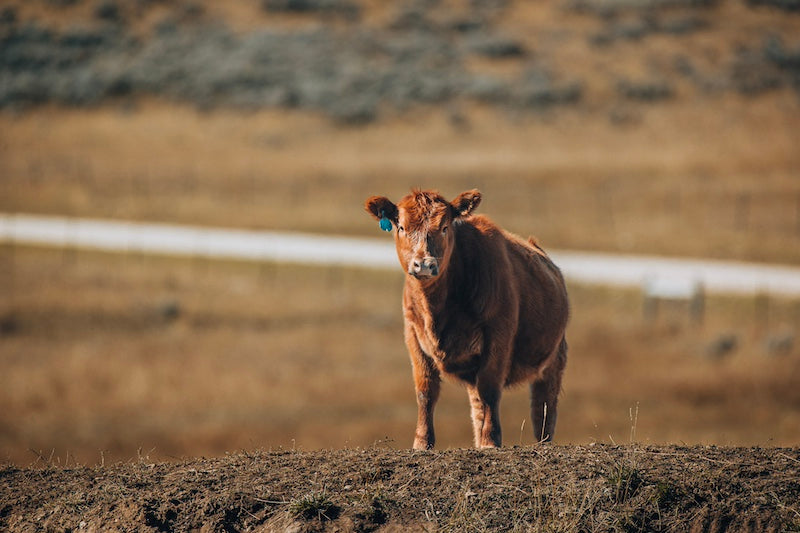
The Need for Proper Handling and Processing in Beef Quality
We mean it when we say, “We do everything with beef in mind.” Every aspect of cattle ranching affects the quality of the beef. This article explores the importance of proper handling and processing and their contribution to tender, flavorful, high-quality beef.
Before we get down to the nitty-gritty, we must recognize the core value of cattle ranching. Talk to any rancher, and they’ll express the value of stewardship. It’s a guiding principle for those working in agriculture. Stewardship means preserving the land so it’ll regenerate and retain its health year after year. It also means respecting other living creatures.
There’s a common misconception that beef producers abuse their livestock. That couldn’t be further from the truth (at least for most producers). According to countless studies, beef quality is significantly influenced by the cattle’s overall treatment, meaning an abused animal does not yield good meat.
Ranchers care for their livestock because, as stated above, beef quality suffers if the animal suffers. To better understand the relationship between ranchers and cattle, consider cattle ranching an ecosystem or the circle of life. Ranchers passionate about sustainable agriculture raise cattle and give them the best lives possible. In return, the cattle produce high-quality beef.
We could argue that ranching is a symbiotic relationship. Without ranchers, most cattle wouldn’t exist. Without healthy cattle, ranchers would be out of jobs, and our nation’s food supply would deteriorate. Regardless of whether you agree, the main takeaway is that ranchers must respect and humanely care for their cattle to produce quality beef.
What is the connection between cattle handling and beef quality?
Stress damages meat. Improper handling, extended transportation to slaughter, and other stress-inducing factors result in bruised and “dark cutting” beef—the kind you don’t want on your plate.
Temple Grandin, livestock welfare researcher and Colorado State University professor, spent much of her life studying the correlation between animal treatment and meat quality. She discovered humane practices benefit meat quality at the ranch, feedlot, and slaughter plant. For example, she found that if an animal becomes agitated at the slaughterhouse in the last five minutes of its life it yields tougher meat than those that remain calm. Grandin said stress from poor handling practices causes the cattle to produce cortisol, which slows desired weight gain and makes the beef less tender.
Grandin’s pioneering advancements significantly improved meat quality and contributed to historically high meat prices. Today ranchers use her humane practices and research to better their beef.
The key word to remember is cortisol. Think of it like poison to quality beef. Cattle produce high levels of cortisol when chronically stressed. This leads to glycogen depletion and dark cutting.
(Dark cutting is a term for meat that does not turn bright red when cut and exposed to air. The lack of color usually means the meat has a high pH level. Dark cut meat is tough with an undesirable flavor.)
An animal’s entire performance—weight gain, conception rates, milk yield, immune function, and carcass quality—is connected to handling practices. If cattle suffer from stress, injury, fatigue, dehydration, and so on, their beef will experience shrinkage, bruising, and other negative impacts.
Stress damages meat, aka muscle. Think about that next time you worry about work or your kiddos. High levels of cortisol aren’t good for you either.
What role does transportation play in the quality of beef?
Road trips can be fun, right? Unless you’re standing in a bus shoulder-to-shoulder with dozens of strangers FOR HOURS. Even imagining those conditions may give you anxiety.
Properly transporting cattle from a ranch or feedlot to a slaughterhouse is an art. The longer the transportation journey, the more stress on the cattle and thus more damage to the beef. The more cattle in a single load, the higher the likelihood they’ll develop carcass bruising and creatine kinase.
A study in Chile discovered that 16 hours of transport caused an increase in the cattle’s muscle pH, a decrease in muscle luminosity, lower carcass weights, and a high percentage of “dark cutting.” Generally, transporting cattle long distances hurts their well-being and beef quality.
High stocking density and poor transport conditions also cause detrimental stress. A study done on Friesian steers discovered that, when transported at high stocking density, animals lying down were unable to rise and thus were trapped.
Another possible stressor is mixed loads. Research shows that cattle from various locations and transported together produce more dark cutters than loads of cattle from a single origin. Plus, mixed loads that aren’t separated (steers and heifers in the same compartment) yield even more dark cutters than mixed loads that are separated.
In summary, transportation can have a drastic effect on beef quality. Producers must consider stressors like transportation time, stocking density, and load type when deciding how to transport their cattle. Even the smallest detail could make a huge difference: origin, cattle unloading speed, driver training, truck ventilation, trucking experience, sex, and whether or not cattle were held in lairage overnight.
We get stressed just typing all that.
Why is proper beef processing crucial for meat quality?
Besides limiting the cattle’s stress and prioritizing humane treatment, proper beef processing ensures the meat is tender, flavorful, and safe to consume.
A good slaughterhouse uses a stunning chute to minimize animal stress followed by a virtually painless slaughter process. The quality beef is expertly cut in a sterile environment, sometimes dry-aged, then packaged for peak freshness.
Humane treatment results in quality beef. We can’t highlight that enough.
What are the best practices for cattle handling on a ranch?
Ranchers may have different opinions about the best ways to handle cattle. We prioritize our cattle’s well-being above all else and refuse to cut corners, which leads to the final question . . .
What innovations or techniques has Lazy T implemented to improve beef quality through handling and processing?
We are serious about our call to stewardship and sustainability and practice responsible handling year-round. Our cattle live low-stress lives on our Wyoming ranch. We work them on horseback, never using ATVs, to prevent cortisol spikes. When it’s time to process, we carefully choose our transportation methods and slaughterhouse, dry-aged the beef for 21 days, then package the beef and ship it to your front door in a cooler with dry ice.
We’ve found that quality beef is a daily pursuit. It comes from great genetics, fresh water, natural feed, intentional care, and humane processing. The saying rings true . . .
Treat your animals well, and they’ll do the same for you.
Explore our beef offerings for a taste of properly handled, ranch-raised beef.


